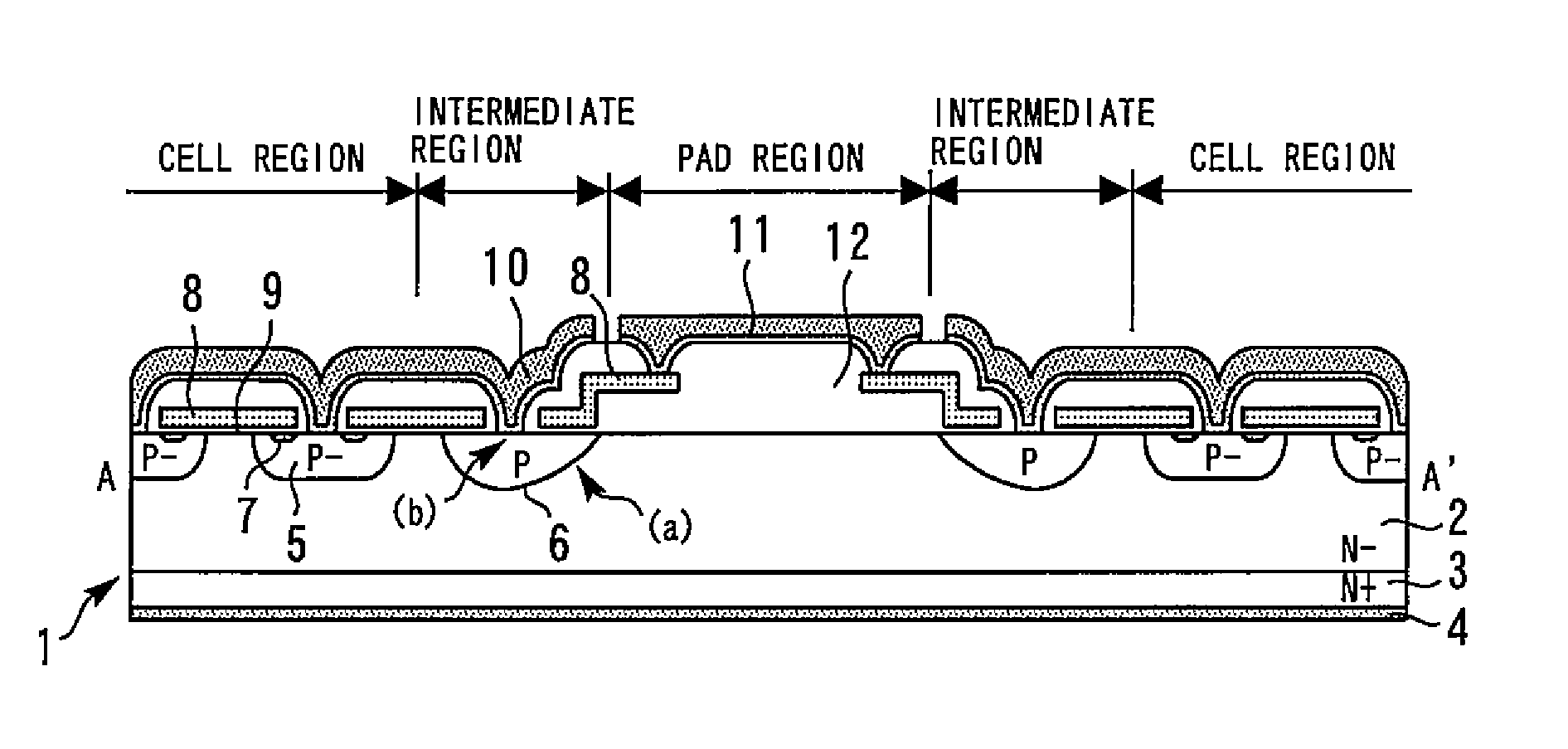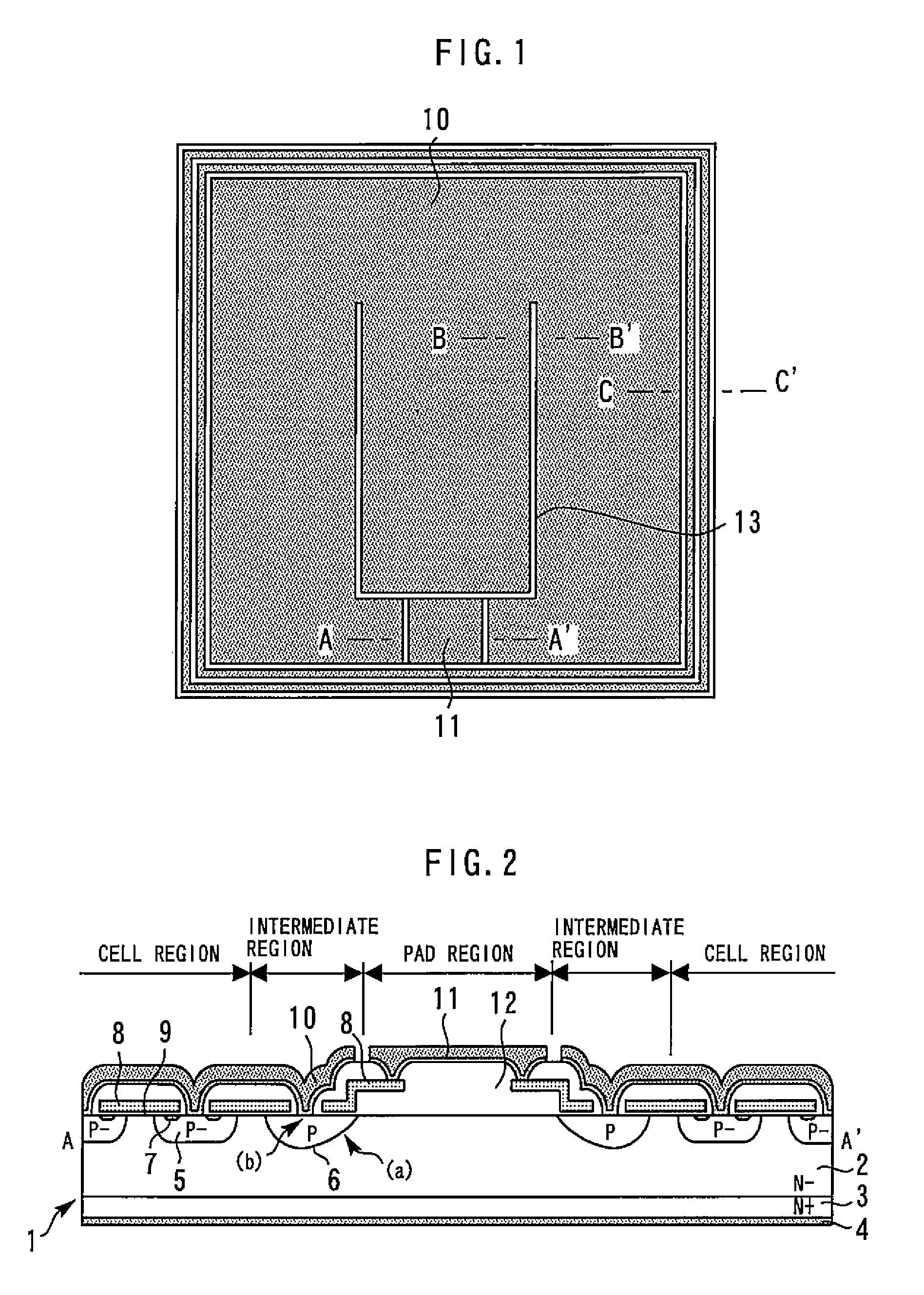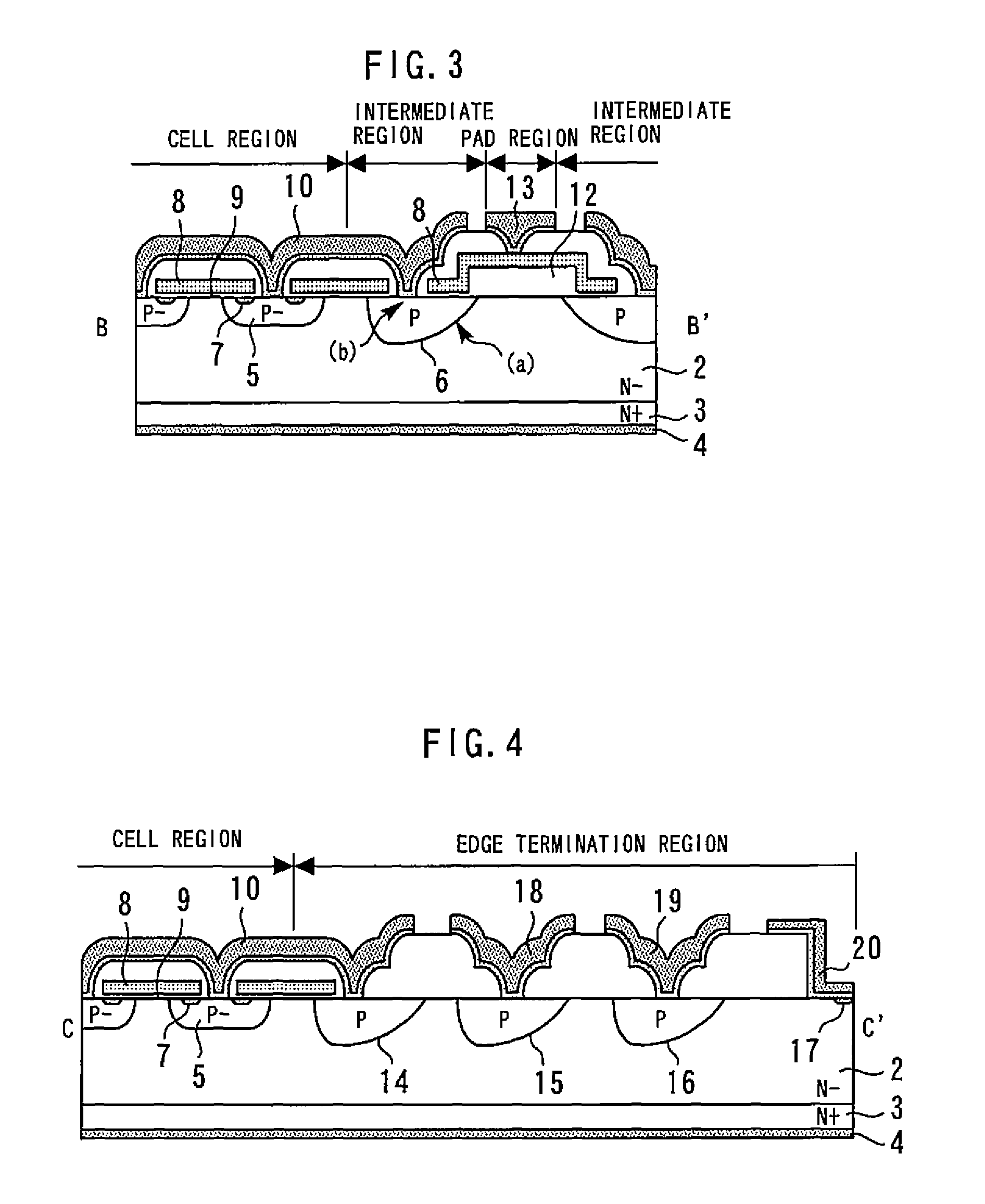Semiconductor device having a variation lateral doping structure and method for manufaturing the same
a technology of lateral doping structure and semiconductor device, which is applied in the direction of semiconductor device, electrical apparatus, transistor, etc., can solve the problems of broken p-type base layer provided between the gate pad and the cell region, and achieve the effect of improving the avalanche capacity
- Summary
- Abstract
- Description
- Claims
- Application Information
AI Technical Summary
Benefits of technology
Problems solved by technology
Method used
Image
Examples
first embodiment
[0028]FIG. 1 is a top view showing a semiconductor device according to the first embodiment of the present invention. FIG. 2 is a sectional view taken along the line A-A′ in FIG. 1.
[0029]A silicon substrate 1 has a cell region, a pad region, an intermediate region, and an edge termination region. The intermediate region is placed between the cell region and the pad region. The edge termination region is placed outside the cell region and the pad region.
[0030]An N−-type drain layer 2 is provided on the entire region in the silicon substrate 1. An N+-type drain layer 3 is provided under the N−-type drain layer 2, and a drain electrode 4 is connected on the lower face of the N+-type drain layer 3.
[0031]In the cell region, a P−-type base layer 5 is provided on the N−-type drain layer 2. In the intermediate region, a P-type base layer 6 is provided on the N−-type drain layer 2. In the P−-type base layer 5, an N+-type source region 7 is provided. A gate electrode 8 is provided on a channe...
second embodiment
[0050]FIG. 16 is a sectional view showing a semiconductor device according to the second embodiment of the present invention. In addition to the configuration of the first embodiment, a P-type base layer 23 is provided on the N−-type drain layer 2 in the pad region. The P-type base layer 6 in the intermediate region is connected to the P-type base layer 23 in the pad region. However, different from the first comparative example, the P-type base layer 23 is shallower than the deepest portion of the P-type base layer 6.
[0051]FIG. 17 is the graphs showing the field strength under the gate pad in the second embodiment and the first comparative example. The abscissas show the field strengths, and the ordinates show the depths from the surface of the silicon substrate 1. The areas of the triangles in the graphs correspond to the voltages maintained by the N−-type drain layer 2 and the P-type base layer 23, respectively. In the first comparative example, almost all breakdown voltage is mai...
third embodiment
[0056]FIG. 19 is a sectional view showing a semiconductor device according to the third embodiment of the present invention. In place of the P-type base layers 6 of the first embodiment, the P-type base layers 24 are provided on the N−-type drain layer 2 in the intermediate region and the pad region. The impurity concentration in the P-type base layers 24 increases toward the center of the gate pad 11, and reaches the peak at the center portion of the gate pad 11. The impurity concentration gradation of the P-type base layers 24 has a more gentle VLD structure in comparison with the P-type base layers 5. Thereby, the impact-ionized current in the avalanche operation can be lowered.
[0057]In addition, in the first to third embodiments, the present invention is applied to the n-channel power MOSFET. However, the present invention is not limited to this application and can also be applied to p-channel power MOSFETs, IGBTs, or SiC devices.
PUM
 Login to View More
Login to View More Abstract
Description
Claims
Application Information
 Login to View More
Login to View More - R&D
- Intellectual Property
- Life Sciences
- Materials
- Tech Scout
- Unparalleled Data Quality
- Higher Quality Content
- 60% Fewer Hallucinations
Browse by: Latest US Patents, China's latest patents, Technical Efficacy Thesaurus, Application Domain, Technology Topic, Popular Technical Reports.
© 2025 PatSnap. All rights reserved.Legal|Privacy policy|Modern Slavery Act Transparency Statement|Sitemap|About US| Contact US: help@patsnap.com



